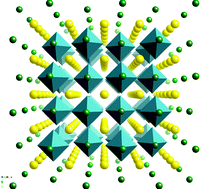New approaches to hydrogen storage†
Abstract
The emergence of a Hydrogen Economy will require the development of new media capable of safely storing hydrogen in a compact and light weight package.

- This article is part of the themed collection: Renewable Energy

 Please wait while we load your content...
Please wait while we load your content...